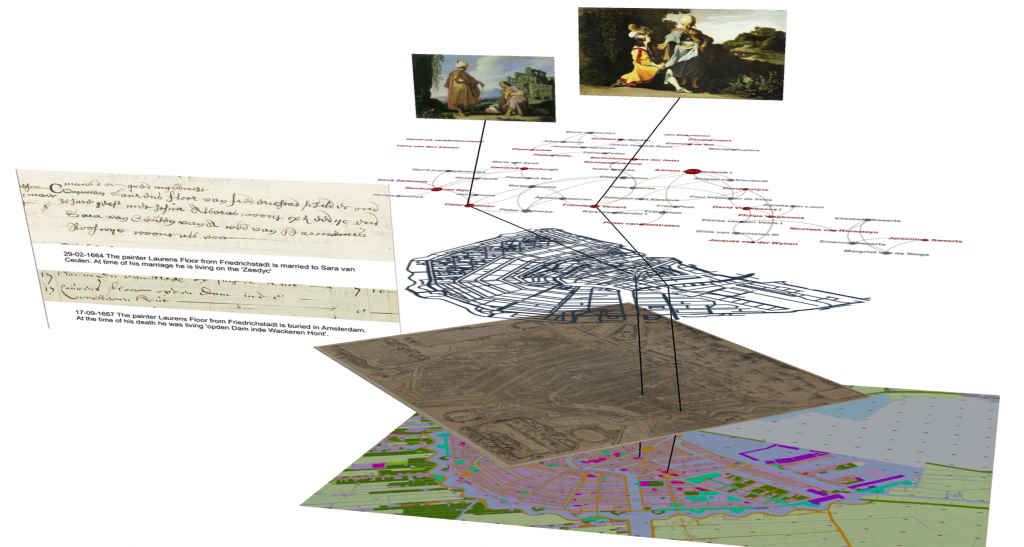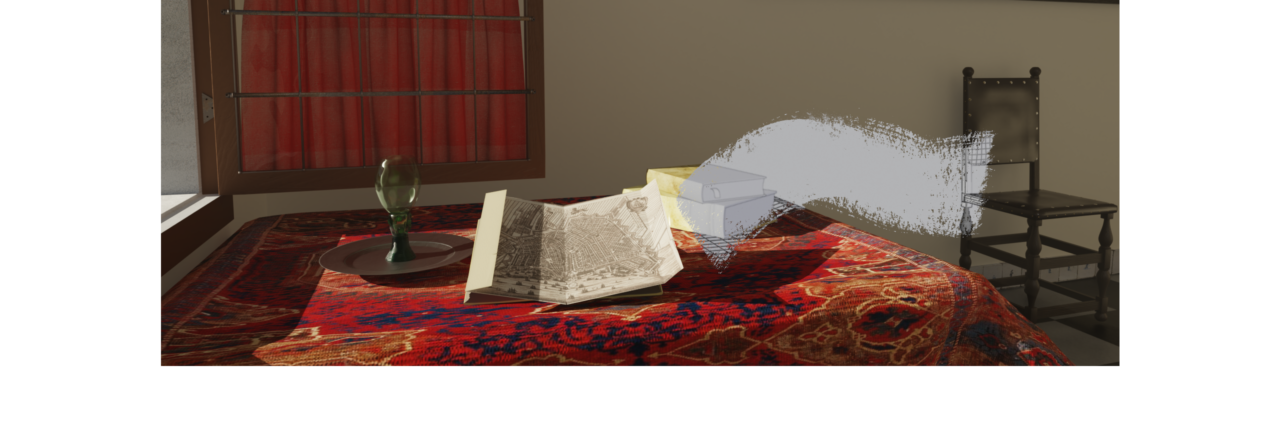The Virtual Interiors as Interfaces for Big Historical Data project focuses on the question of how we can develop and publish 2D/3D/4D user interfaces to the linked data of the Semantic Web in the form of digital maps and virtual rooms using historical data on the production and the consumption of the Dutch Golden Age.
The Semantic Web needs interfaces for critical, trustworthy readings of Big Data for humanities research, cultural heritage and creative industries. (Re-)using data on the production and consumption of cultural goods, geodata, maps and building plans of the Dutch Golden Age, the ‘Virtual Interiors’ project unlocks the research potential of big historical data in a geospatial context. Virtual reconstructions of interiors of houses and their locations in Amsterdam of the Dutch Golden Age will not only provide insight in socio-spatial aspects of the cultural production and consumption of the creative industries, but also contribute to the development of spatial humanities and digital hermeneutic methods.

Figure 1: Multi-layered historical sources anchored on the vectorized cadastral and historical maps. Archival materials are located and social network of artists and their artworks are pinpointed on the map to contextualize a creative urban space of Golden Age Amsterdam.
The Amsterdam case study focuses on the implementation of these methods by enhancements of GIS with applications of “deep/thick maps” and historic reconstructions in virtual 3D/4D spaces with multiple perspective views and visual representations of uncertainty. However, the question how we tell, edit and represent “stories” in virtual reconstructions with incomplete/inconsistent data has relevance far beyond the historic case of Amsterdam.
Contextualising these virtual historic reconstructions with sustainable annotations provides input for the creation of more generic, multidimensional “hyperspaces” that serve as interactive interfaces for research in the digital humanities, cultural heritage, creative industries and beyond. Sustainable solutions for identifying and annotating locations and events in continuously changing configurations in multidimensional virtual spaces are both conceptual and technical challenges for augmented reality applications and games.
Finally, the dissemination and preservation of these enriched reconstructions as enhanced publications support research, cultural heritage and creative industries.
The overarching questions and aims are developed into three interrelated research projects.
- Visualising Amsterdam Interiors (Chiara Piccoli)
- Analytical & Experiential Interfaces for Accessing Historical Data (Hugo Huurdeman)
This project is financed by NWO Smart Culture – Big Data/Digital Humanities

